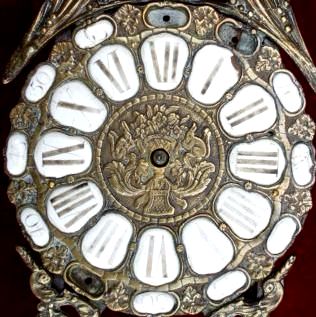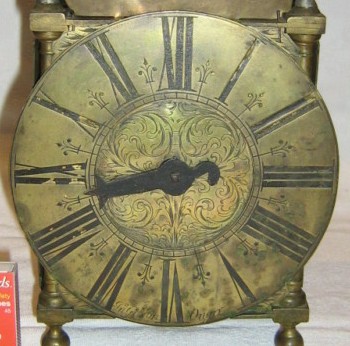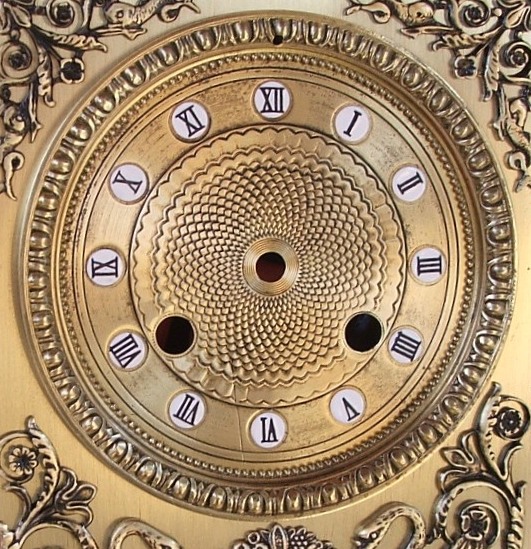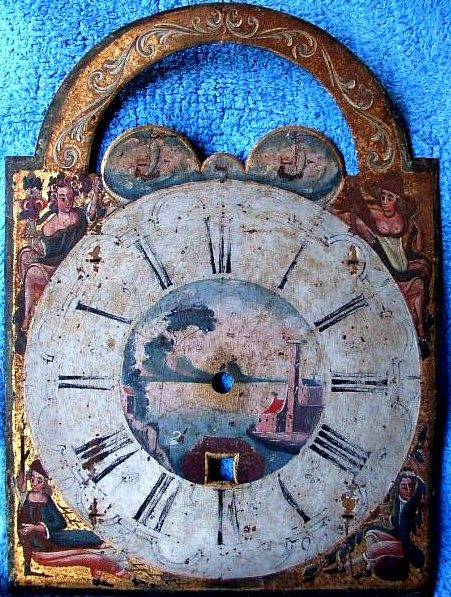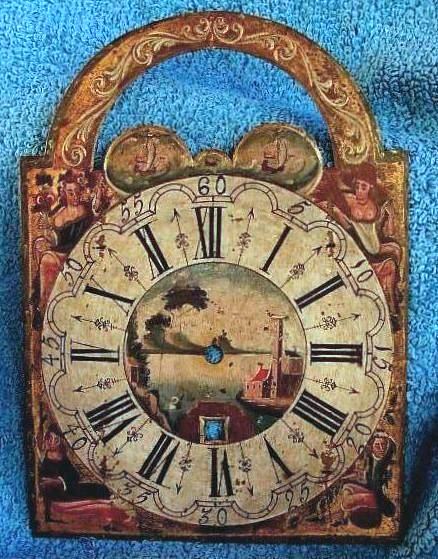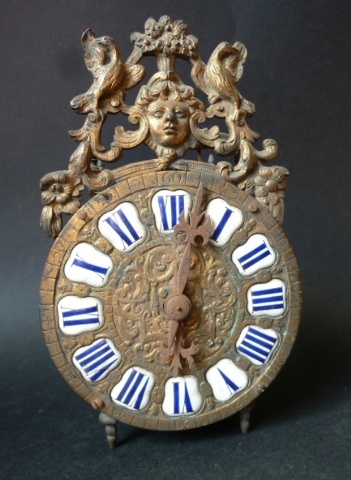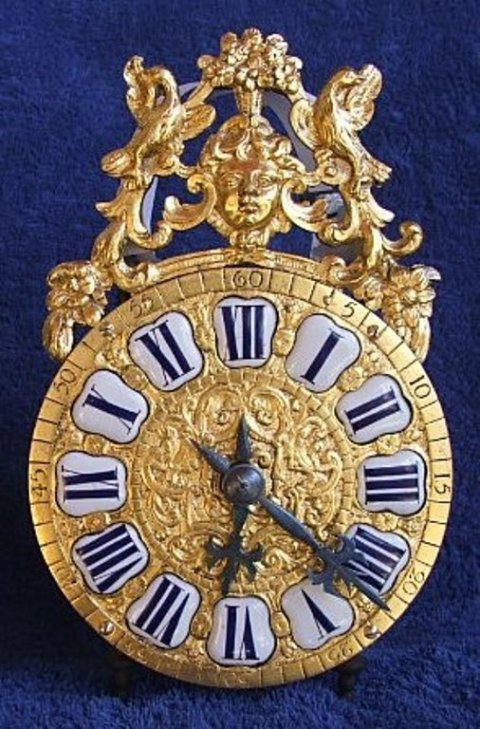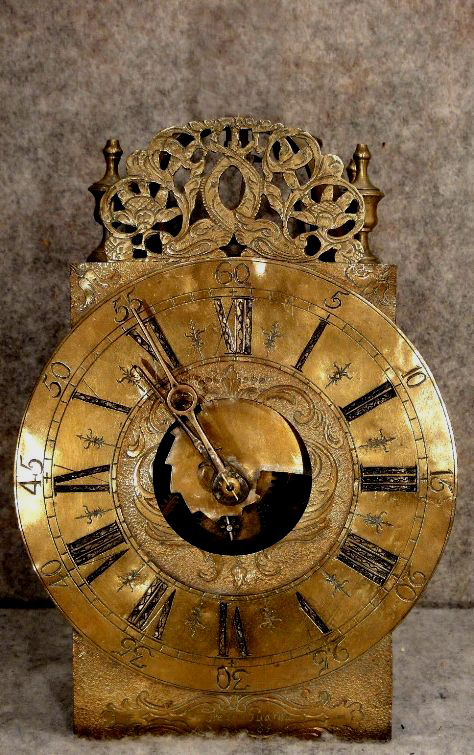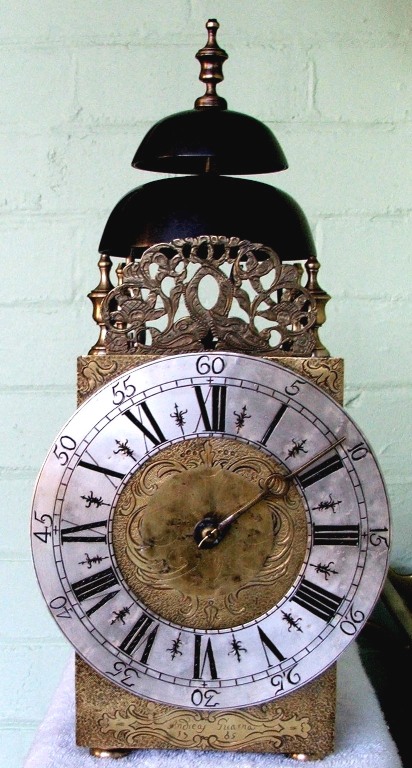CLOCK DIAL RESTORATION
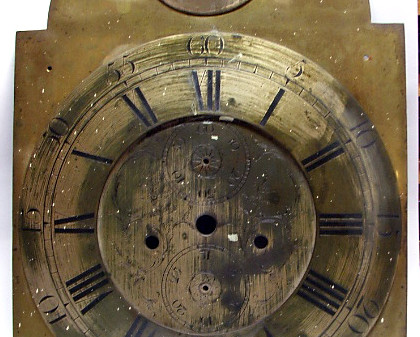
The dial is the focal point of the clock and it obviously has to be readable at a distance for the clock to perform its duty, ie. display the hour of the day.
Dials can be engraved metal, printed on metal, plastic or paper, have applied numerals, painted on wood or metal , fired in porcelain, cast in metal or plastic, or be simple batons etc. Whatever the dial form is, it is subject to deterioration due to age, atmospheric chemicals, cleaning, wear and tear, physical damage and abuse. It is generally agreed that a dial needs to be refurbished if it is unreadable or the clock owner wishes to have the dial restored to its original condition.
The following are examples of dials which I have restored.
1. Porcelain plaques on a brass dial plate.
2. Brass dial with silver chapter ring and black waxed numerals.
3. English lantern clock restored.
4. French clock’s missing numerals replaced.
5. Dutch “staartklok” painted dial on metal plate.
6. French miniature lantern clock, c. 1750, dial gilded ( 23 carat gold ).
7. Italian lantern clock dial, c.1765 by Andreas Guarna.
The centre of the brass dial had been hacked out for some unknown reason. A compatable brass disc was refitted to the centre, engraved so as to match in with the original remaining engraving.
